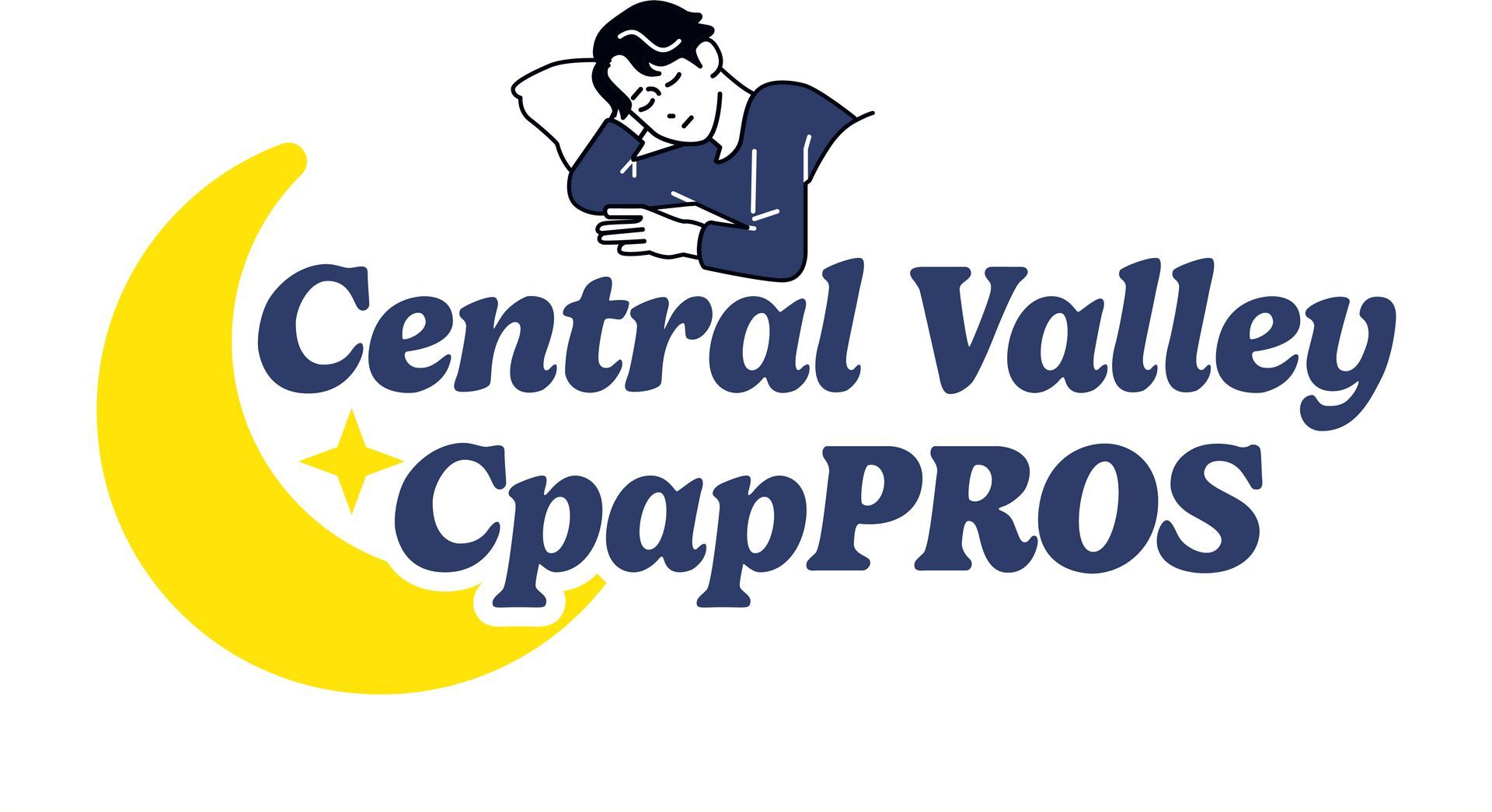Location
313 Motor City Court Ste. A Modesto, CA 95356
Fax
(209) 422-6942
(209) 285-0188
HAVE QUESTIONS?
High quality CPAP equipment
Home Sleep Studies
Central Valley CpapPROS
Sleep CPAP Study
So you have been diagnosed with obstructive sleep apnea and are back for a CPAP (Continuous Positive Airway Pressure) study. You have already taken the first step toward more restful sleep and a more energized life. You are here now to take the second step—a CPAP home sleep study.
What is CPAP?
CPAP is not supplemental oxygen. It is a form of therapy that maintains a volume of air in the upper airway, and that volume of air splints the airway open. It is much the same as inflating a balloon in your upper airway to keep it from collapsing.
Naturally we cannot leave that balloon in your airway, but by using a CPAP machine and having you exhale against the flow generated by the CPAP machine we can cause a volume of air to remain in your airway, splinting it open.
Our goal during the upcoming study is to determine what flow (pressure) is necessary to keep your airway while you experience REM sleep while lying on your back.
Types of CPAP Machines
There are three basic types of CPAP machines available, and we will determine which one best suits your needs.
- A CPAP device delivers a constant pressure.
- APAP (automatic positive airway pressure) adjusts the delivered pressure throughout the night based on your needs.
- BiPAP provides two set pressures — a higher pressure for inhalation and a lower pressure for exhalation.
All CPAP machines are compact, quiet, and easy to use. CPAP masks vary in shape and sizes. Nasal pillows (similar to tiny construction cones) are the smallest form of mask we have and rest on the base of your nose.
Explore Our Wide Range of CPAP Masks for Every Need
We also have masks that just cover your nose, a combination of nasal pillows and an oral mask, and a full face mask.
The full face mask also varies in size and shape and can cover as little as just the nose and mouth up to a mask that covers the entire face from the bottom of your chin to the top of your forehead. We also have a mask similar to what firemen wear when fighting fires.
Mask Types
Masks are made of many things, ranging from soft silicone to soft cloth material.
- For those that cannot tolerate a full face mask and breathe primarily through their mouth, we have chin straps that help keep your mouth closed while you sleep. This reduces leakage and maximizes therapy.
- For hard-to-fit faces we have secondary seals made of a soft cloth material that provides a better seal than the mask can, allowing for maximized therapy success.
- We have a mask to fit every face and every situation. Please do not become discouraged. Communicate with us, and we will find something that works.
How the Study Works
- First, we will spend time finding a mask that you are comfortable with. We are also going to discuss CPAP, so you are fully aware of what we are trying to achieve during this study.
- After finding a mask that you like, we will set you up for the study. We will let you watch TV or read with the CPAP machine turned on at a very low pressure to allow you to get used to it before we ask you to retire for the night.
- When the lights go out and you fall asleep, we will begin the CPAP titration. It may take a while, but just relax and focus on how much better you are going to feel when you are home with your very own CPAP machine.
- We will gradually increase the pressure until all of the apneas, hypopneas, and snoring are eliminated. Then we will monitor your sleep to make sure the flow (pressure) keeps your airway open in all positions (back, stomach, sides) and during both REM (dream) and non-REM sleep.
If you become uncomfortable with the CPAP during the night, please communicate that to us. We have alternative treatments such as BiPAP.
CPAP vs BiPAP Machines
CPAP, although very effective, can be difficult to exhale against at a high pressure. Fortunately. exhalation becomes much easier with BiPAP. Normally, discomfort with CPAP comes during your attempt to exhale against higher pressures. BiPAP addresses that issue.
After your CPAP titration study the physician that ordered the study will contact a local Durable Medical Equipment (DME) company and have them set you up with your own CPAP machine. That order will include the mask type you used the night of your titration and the pressure the machine is to be set at.
Frequently asked questions
How long will it take to get used to CPAP?
Most people adjust quickly to CPAP (1 to 2 weeks). However, some do not. It is important that you continue to use the CPAP device. If you continue to experience discomfort or have problems while wearing the mask, contact your DME, your physician, or us. We will help you solve those issues.
How soon after starting CPAP will I feel better?
You should feel better (rested) almost immediately. If your are having trouble getting used to CPAP, this may take a little longer.
How often do I need to use my CPAP machine?
You should use your CPAP machine whenever you sleep. If you don’t, you will immediately return to your pretreatment sleep-disordered breathing.
Will I ever need to increase my pressure?
After the initial set up and acclimation, your pressure may need to be fine-tuned if you lose or gain weight. If you find the pressure difficult to tolerate, your physician may order a reduction in pressure to aid in your acclimation to CPAP. Also, if you notice a resumption of symptoms your physician may order a pressure increase or bring you back into the sleep lab for additional titration.
I’ve just started treatment and it is irritating my nose?
If you are not using a heated humidifier. the cool dry air provided by the CPAP machine may cause dryness, sneezing, and/or a runny nose. Normally, these conditions can be remedied by using a heated humidifier or a saline nasal spray.
Can I continue to use my CPAP machine when I have a cold?
If you experience an infection of the upper respiratory tract, middle ear or sinus, you should contact your physician. If you do continue treatment you should wash the mask and hose more often. You may also find that a full face mask is more effective at delivering pressure if your sinuses are congested.
Do I need to take my CPAP machine with me to the hospital if I am hospitalized?
Most hospitals will no longer allow a CPAP user to bring their equipment into the hospital for use during your hospitalization. Inform your physician, or the physician that arranged the hospitalization so a CPAP machine can be provided for you during your stay.
Will I ever be able to stop treatment?
Sleep apnea currently has no cure. The good news is that the CPAP treatment will effectively control your sleep apnea as long as you use it regularly.
If I travel overseas can I use my CPAP machine?
Most CPAP devices are set to accept whatever power supply is available. You will have to have an adaptor to allow you to plug in your CPAP machine into the power supply socket of the foreign country. However, it is best to contact your DME and inquire about foreign travel with your particular CPAP machine.
Things to Remember
If you experience any of the following symptoms contact you physician immediately:
- Headache
- Middle ear or sinus discomfort
- Chest pain
A slightly bloated feeling following the use of CPAP is usually the result of excessive air swallowing. Movement will normally allow this trapped air to escape in the form of a burp. Contact your physician if the problem persists.
Location:
313 Motor City Court Ste. A Modesto, CA 95356
phone number:
fax:
(209) 422-6942
(209) 285-0188
quick links
Hours of Operation
An Appointment is Recommended
- Mon - Fri
- -
- Saturday
- -
- Sunday
- Closed
Central Valley CpapPros. All rights reserved.
Privacy Policy | Terms of Use | Accessibility | Site by BroadProximity®



